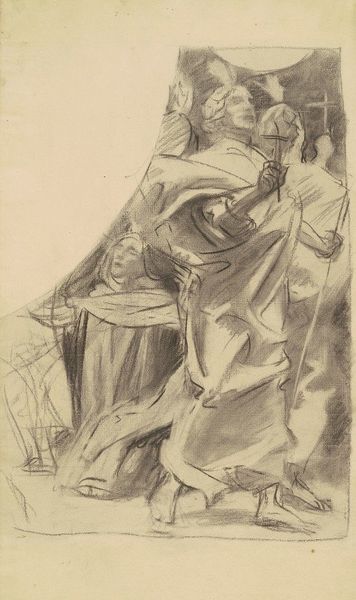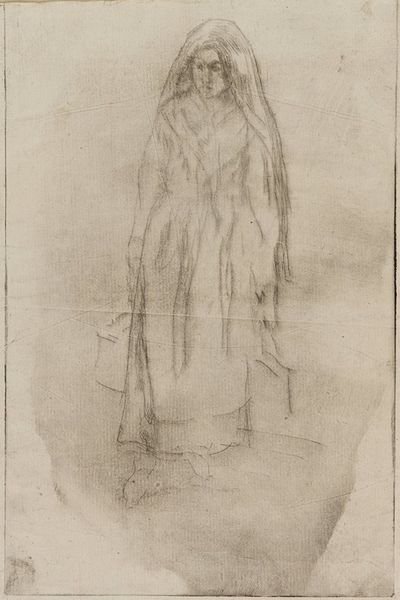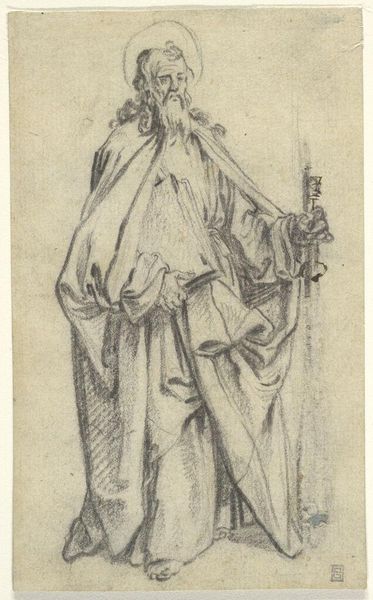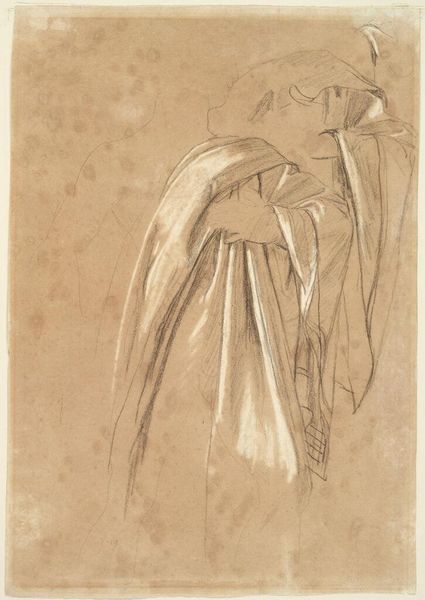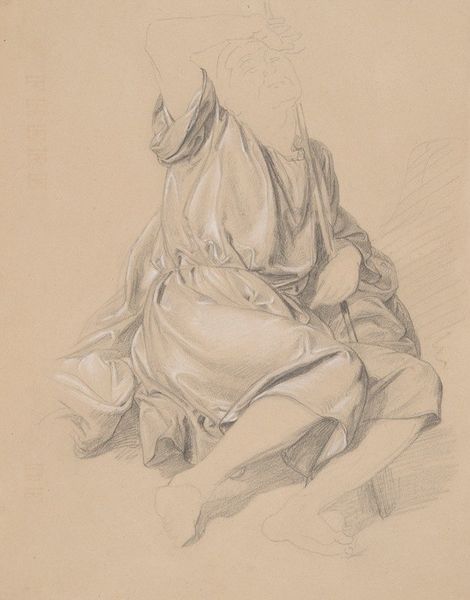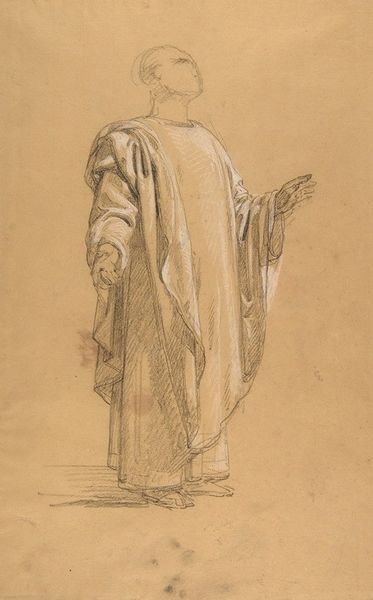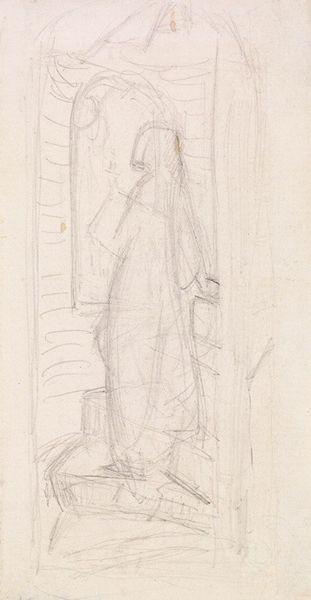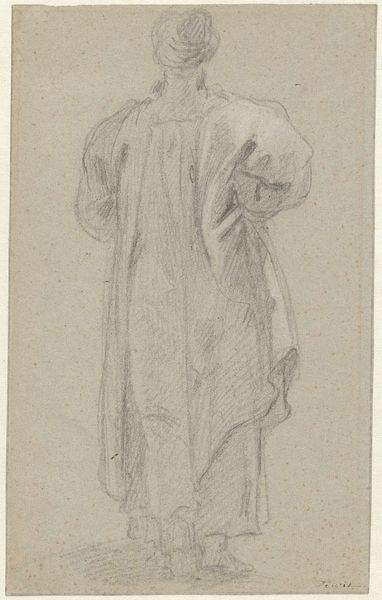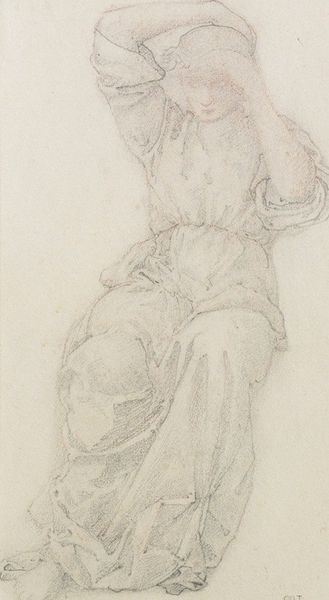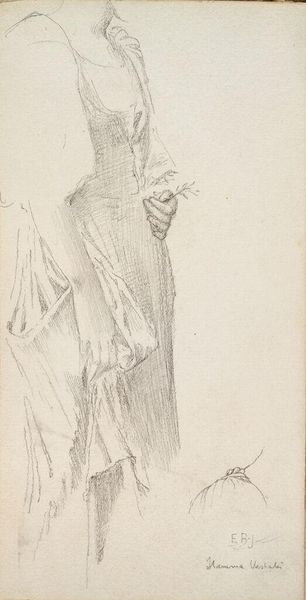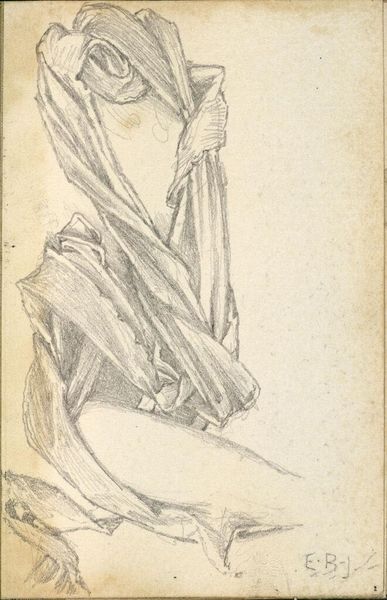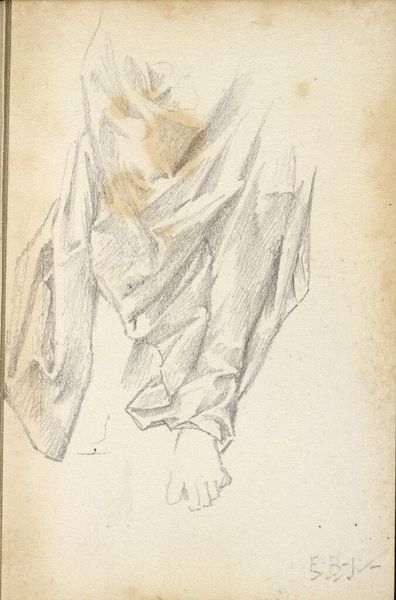
drawing, pencil
#
drawing
#
figuration
#
pencil drawing
#
pencil
#
history-painting
#
pre-raphaelites
Copyright: Public Domain: Artvee
Curator: This compelling pencil drawing is titled "A Study for Sir Ewain in the Holy Grail Tapestries," created by Edward Burne-Jones in 1893. Editor: Immediately, I notice the figure’s quiet contemplation and the delicate drapery—almost as if sculpted rather than drawn. There’s an introspective mood to the piece, wouldn't you say? Curator: Absolutely. This work is connected to Burne-Jones's larger commission of tapestries depicting scenes from "Le Morte d'Arthur" by Sir Thomas Malory. It was a pivotal moment in reviving medieval themes within late 19th-century art. The tapestries became emblems of the Arts and Crafts movement. Editor: Considering the Arthurian context, what do you make of the symbolism present here? He's wearing some kind of straps, around his waist and also around his feet... Curator: Indeed. Sir Ewain, also known as Yvain, is often associated with chivalry and testing one's virtue. This "Study" allows for some closer inspection than we might find in the final tapestry. I believe those ropes are to be seen within the symbolic constraints Ewain confronts on his quest. A knight tested but held in service. Editor: And the very clear focus on clothing in particular! That rather heavy material suggests a man both restricted by code, but armored in piety as well. Does Burne-Jones play on period ideas, or reinterpret Arthurian images, would you say? Curator: It’s both, I think. He engages in a kind of cultural appropriation. These characters weren't only British cultural icons, of course: Arthurian myth tapped into something larger, appealing to this neo-medievalist taste of the late 19th century that resonated throughout Europe, even North America. This particular rendering captures a broader yearning for moral grounding within modern life. Editor: A nostalgic quest, if you will, rendered with this wonderfully quiet melancholy. It makes me want to see these figures in their final, complete tapestry designs. It’s like capturing one act in a much grander stage performance, this drawing. Curator: Precisely. I find that notion resonates profoundly. Considering its scale and preliminary purpose, it shows us how meticulously Burne-Jones conceived not just the image, but the ideology and aesthetic experience of this art. Editor: Yes. There is an undercurrent of romantic sensibility, yet one tethered firmly to its role as an intermediary step towards this grander woven vision. I can definitely say my assumptions have been challenged! Curator: Mine as well. Thinking about how the tapestry serves both aesthetic and sociopolitical function gives new resonance to Burne-Jones’ artistic strategy.
Comments
No comments
Be the first to comment and join the conversation on the ultimate creative platform.
